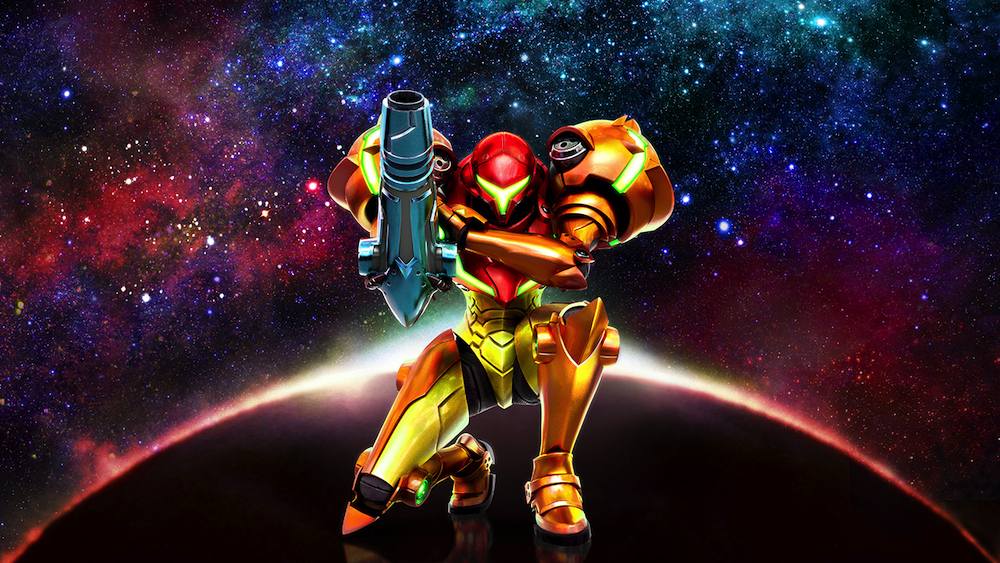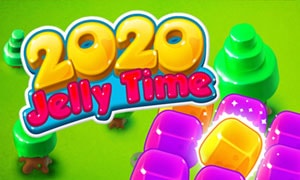Best Metroid Games: Ranking The Iconic Series Ahead Of Metroid Dread

The Metroid series is one of the oldest in modern gaming, having originated in 1986 on the Nintendo Entertainment System (NES). Despite its age, though, it's arguably never been more relevant to games than it is today. The series helped define the "metroidvania," and the influence of that genre can be felt in various other games that encourage exploration as a central mechanic. It's also perhaps one of Nintendo's least iterated series, having received fewer games than others like Mario or The Legend of Zelda. That cautious approach has led to each entry bringing something unique to the series. We've put together a list of the best Metroid games--not including spin-offs like Metroid Prime Pinball and Hunters--ranked from worst to best.
10. Metroid: Other M
Metroid: Other MThe Metroid series is incredibly small--just four main side-scrolling games and three first-person Metroid Prime games, along with a handful of remakes--and many of them are strong showcases of Nintendo's first-party prowess. That all-killer, no-filler approach means a game that is merely pretty good, like Metroid: Other M, bottoms out the list. The project was spearheaded by Team Ninja, best known at the time for the Ninja Gaiden series, and as a result Other M was a very different kind of Metroid game. It was the first to feature melee combat, and the perspective was a mix of traditional 2D and Prime-like 3D.
It was a daring mix of ideas, and not all of them worked. While Other M was still a decent game, scoring a 79 review average on GameSpot sister site Metacritic, it received criticism for its uneven difficulty, and especially for its groan-worthy story and voice acting. Perhaps worst of all, it took one of gaming's most iconic heroines and made her doting and immature, and removed her agency in favor of a commanding officer. We can only assume the mixed reception is why there has been no Other M2.
9. Metroid Prime 3: Corruption
Metroid Prime 3: CorruptionThe third and final game in the Metroid Prime trilogy--at least until Metroid Prime 4 comes out--was widely hailed as a high point for a series that has already had several high points. Though fans differ on which ranks higher, this or Prime 2, it's inarguably Retro at the top of its game and having learned the lessons from its previous Metroid outings. Corruption was slightly more action-oriented than the prior Prime games, and it relied on Wii motion controls for precise aiming. It was also hailed as one of the best-looking Wii games, in an era not especially known for top-tier graphics. If anything, Corruption suffers from only slightly diminishing returns because we had two fantastic Prime games to play already.
See at GameStop8. Metroid Prime 2: Echoes
Metroid Prime 2: EchoesMetroid Prime was critically acclaimed, setting the stage for high expectations from its follow-up, Metroid Prime 2: Echoes. Shockingly, Retro managed to deliver on that high standard, creating a sequel that built upon the foundation of Prime and expanded it with a new light and dark mechanic that also had an impact on the story. Just like the 2D Metroid games and the original Prime, Echoes sported a tightly-designed environment bursting with secrets to uncover and explore as you expanded Samus' suite of abilities. It even introduced a moderately well-received multiplayer mode, which may have influenced the decision to release the much less lauded Metroid Prime Hunters on Nintendo DS two years later. Though some critics did ding the late-game hunt for keys, which many saw as artificial padding, it was generally regarded as a great successor to Prime.
7. Metroid
MetroidThe original Metroid on NES is certainly an artifact of its time, and going back to it today likely isn't as fun as many others on the list. But it ranks for sheer influence. All of the pieces we recognize in Metroid today, from the sprawling map to the eerie tone, were present in this original sci-fi incarnation. This was Nintendo at among its most experimental, creating an entirely new sub-genre of action game. This is the proto-metroidvania, and while not as polished as some of its follow-ups it helped build the template for everything that followed. In the process, Nintendo created one of gaming's most enduring icons.
6. Metroid II: Return of Samus
Metroid II: Return of SamusHow do you make a sequel to one of the most influential games of the 8-bit era? With a handheld game that improves nearly every aspect, of course. Return of Samus pulled in the perspective for a closer look at Samus as she explored SR388, the home planet of the Metroids. Her mission was to eradicate the creatures before the dreaded Space Pirates could exploit them for their own nefarious purposes, which made for an excellent merging of story and gameplay. Rather than simply uncovering the planet, you had to actually hunt down every single Metroid as tracked by an in-game counter. As the Metroid home, SR388 introduced new species and variants of Metroids. It all led to an ultimate conclusion in which Samus showed mercy to a Metroid hatchling--the last of its kind--a decision that has rippled through the story of every subsequent Metroid game.
5. Metroid Fusion
Metroid FusionThe last chronological game before Metroid Dread, Fusion for the Game Boy Advance represents a later era of 2D Metroid that is both influenced by earlier games and forges its own path. This time Samus is critically injured by a parasite only known as the X organism, and scientists give her an experimental vaccine made from Metroid DNA to save her life. Functionally this makes Samus part-metroid, and able to absorb the X-parasites in the same way that metroids would absorb the life energy of their prey. (The DNA fusion also gave Samus a dope new suit.)
Though Fusion did include exploration elements like its predecessors, it was slightly more linear than other games. Rather than free exploration you were guided through missions with specific objectives to reach. This sanded off some of the edges that could be both thrilling and frustrating in other games, making a modernized version of the Metroid experience.
4. Metroid: Samus Returns
Metroid: Samus ReturnsThis remake of the Game Boy classic was a swan song for the Nintendo 3DS. While keeping the structure of the original Return of Samus intact, developer MercurySteam introduced new elements like a melee counterattack and a free aiming ability, along with a suite of new Aeion abilities. This was a remake at its best, taking the core structure of a classic game and making it more accessible to modern audiences without sacrificing what made it so special to start with. And Nintendo apparently agrees, as series producer Yoshio Sakamoto continued to partner with MercurySteam for the upcoming Metroid Dread.
See at GameStop3. Metroid: Zero Mission
Metroid: Zero MissionSimilar to Samus Returns, Zero Mission was a remake that helped reintroduce some early Metroid concepts to a new generation of players. This time, though, it was a new take on the very first Metroid game. The new version retained many of the same power-ups and structure of the original, but introduced new mini-bosses and an expanded environment to explore. It was also more narrative driven, incorporating one story moment that removed Samus from her Power Suit entirely. During this portion Samus had to make-do with her wits and a relatively weak pistol as she retrieved her suit. That memorable portion has gone on to define one of the character's signature looks, the "Zero Suit Samus" seen in games like Super Smash Bros. Ultimate.
2. Metroid Prime
Metroid PrimeLike Super Mario 64 and The Legend of Zelda: Ocarina of Time before it, Metroid Prime took one of Nintendo's most revered franchises and brought it into the 3D era. And in the journey to the third dimension, the player also got an all-new perspective: Samus. The first-person perspective had previously been reserved mostly for first-person shooters, but Retro Studios applied it to the otherworldly tone and atmosphere of a Metroid game. Even the little touches astounded, like seeing Samus' face reflected in her visor when the light would hit it just right. The transition was impeccable, creating a truly innovative masterpiece that created something new while paying respect to its roots.
1. Super Metroid
Super MetroidWidely hailed as one of the best games of all time and a major template for many modern games to follow, Super Metroid is a timeless masterpiece. Set immediately after the events of Metroid 2, Samus delivers the Metroid hatchling to researchers. Only moments later, though, the facility is attacked by space pirates, leading Samus back to the planet Zebes. The 1994 classic is remembered for its sense of isolation and exploration. The map was huge and multifaceted, brimming with passageways blocked by impassable elements that prompted the player to wonder when they would come back to open new passageways. It had a perfectly paced sense of empowerment as Samus gained new abilities and even upgrades to her iconic suit regularly. And the finale, which sees the baby Metroid sacrifice itself to save the woman who spared its life, is a hallmark of resonant, wordless storytelling.
The so-called "metroidvania" genre is named after a portmanteau of two of its most influential progenitors: the Metroid series, and Super Metroid more specifically, and Castlevania: Symphony of the Night. While it's true that both were incredibly influential to the genre, Super Metroid beat Symphony of the Night by three years, and SotN itself was doubtlessly influenced by Super Metroid. That makes Super Metroid the core of one of the most popular and enduring game genres of all time, and it's still one of the best examples of it. Super Metroid is playable on Nintendo Switch with a Switch Online membership.
Sign up for Nintendo Switch Online
Get 1 year for $20 or a family plan for $35.
See Switch Online at AmazonGameSpot Best Lists and Recommendations
- The Best Nintendo Switch Games
- The Best Xbox Series X Games To Play Right Now
- The Best PS5 Games So Far
- + Show More GameSpot Best Lists and Recommendations Links (1)
- The 25 Best PC Games To Play Right Now




